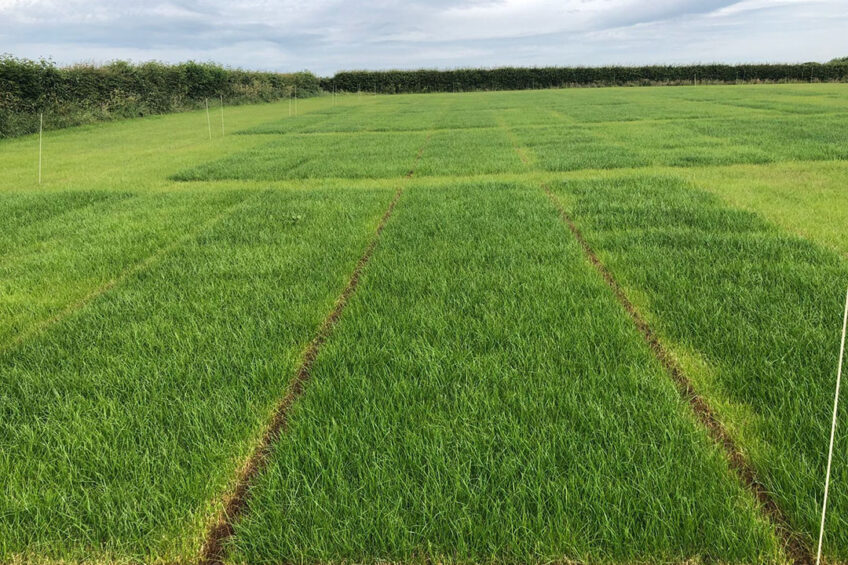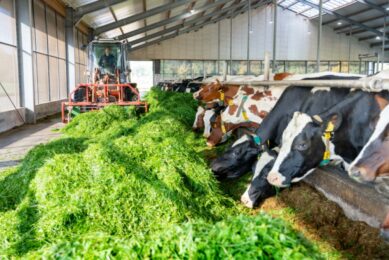Better grass yields with plasma treated manure

Ongoing trials on a large dairy farm in Northern Ireland, that installed a plasma reactor unit to enhance the quality of slurry digestate, have shown positive results.
Following the installation in 2018 of a N2 Applied plasma manure processor at George Bingham’s dairy farm in County Antrim, a number of grass growth trials have been undertaken.
Increase of dry matter grass yield
This farm produces biogas digestate from cow manure which was then treated in the manure processor. The agronomic value of the treated digestate was examined through applications to experimental field plots on-farm, carried out by the Agri-Food and Biosciences Institute (AFBI), also based in Northern Ireland. The trials compared plots that had ordinary digestate from the farm’s biogas plant applied and plots where the enhanced digestate was applied. Overall, the results show a significant increase of dry matter grass yield from the treated digestate plots compared to those with untreated digestate, even though the trial only covered the second and third cut of grass in 2018.
Treating manure and biogas with plasma gas
George Bingham runs 750 cows on his dairy farm and tested this innovative technology from Norwegian company N2 Applied in 2018. This technology treats manure or biogas digestate with a plasma gas. The N2 manure processor fixates nitrogen from air by splitting the N2 and O2 molecules in air into N and O atoms forming nitrogen oxides. The nitrogen oxides are absorbed into liquid manure or biogas digestate and combined with free ammonia to form ammonium nitrate. The process improves the agronomic and environmental characteristics of the product by reducing ammonia emissions and making the nitrogen available for direct plant uptake.

Higher grass yields compared to N fertiliser
The purpose of the field trial was to test these effects and was carried out on 72 experimental grass plots, each receiving one of 12 treatments. There were 3 application rates of plasma treated digestate and 3 rates of untreated digestate; a low, medium and high rate equivalent to 100, 200 and 300 kg N/ha/year. There were 6 replicated plots of each treatment, in a randomised block design across the field. The trial endured somewhat extreme weather conditions during 2018 starting with very wet conditions and then unusually dry months in May and June with a total of 35.8 and 32.2 mm rainfall respectively. September was also a dry month with 43.1mm total rainfall. Summer temperatures remained high between May and August, with a July high of 27.6C.
Soil temperatures were also high during these months, with June and July readings of 17 degrees Celcius and 17.6 degrees Celcius respectively. Due to low summer rainfall, soils began to experience drought conditions, with soil moisture falling to 17% during July 2018. For total dry matter yield per treatment, plots receiving plasma treated digestate resulted in significantly higher dry matter yields compared to plots receiving untreated digestate. Plots receiving plasma treated digestate achieved higher yields than those receiving inorganic N fertiliser in the first trial cut and similar yields as inorganic N for both trial cut yields combined. Applying nitrogen at a 200 kg/ha rate with treated digestate results in the same yield as applying at a 300 kg/ha rate with untreated digestate which indicates a 33% higher ammonia loss from the untreated product.
The yield increase at a 300 kg/ha rate for the first trial cut was 24% for the first and 14% average for the 2 cuts combined. The N uptake by grass (kg/ha) was up to 38% higher.
Also read: Efficiency key in lowering GHG emission
Great promise as a nitrogen fertiliser
N2 Applied business development director for Europe, Henk Aarts, said: “Treating digestate in the manure processor reduces the pH and reduces ammonia emissions significantly. This partly explains the higher crop yield of the treated digestate compared to the untreated digestate. “Another reason is the fact that the process directly adds nitrogen from air and produces an ammonium nitrate liquid fertiliser. The ammonium nitrate is directly available for plant uptake. “At cut one, all plots receiving plasma treated digestate displayed the greatest N use efficiency. This was most likely due to the warm, dry weather and drought conditions during the summer of 2018. Cut 2 did not show this effect. “Besides reducing ammonia emissions and smell the treated product increases the crop yield. Overall the N2 solution contributes significantly to sustainable livestock farming,” he added. The overall AFBI report conclusion stated: “In summary, plasma treated digestate displayed great promise as a nitrogen fertiliser, and if successfully implemented on farm provides a significant nutrient source as well as having important economic benefits long-term.” N2 Applied will conduct more trials in Northern Ireland, Scotland and other European countries as well as in South Africa in 2019 to examine the effects further and to substantiate the working principles of N2’s plasma technology.
Join 13,000+ subscribers
Subscribe to our newsletter to stay updated about all the need-to-know content in the dairy sector, two times a week.










